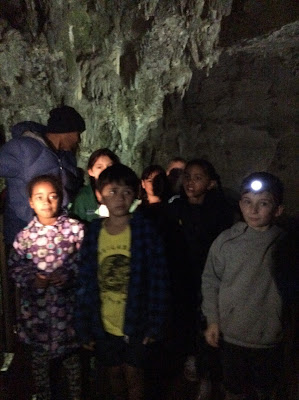
Room 13 is a class of Year Two and Three learners. We are in Totara Team. Our teacher is Ms Jones.
Thursday, November 24, 2016
Saturday, November 19, 2016
Wednesday, November 16, 2016
Ruakuri Reserve Field Trip
Yesterday we went to Ruakuri Scenic Reserve, near Waitomo. It was a fantastic trip.
We were very lucky with the weather. It didn't rain.
Here are some images of the day.
We were very lucky with the weather. It didn't rain.
Here are some images of the day.
Saturday, November 5, 2016
Blackbird
Ms Jones saw a Blackbird get hit by a car while she was walking to school.
She brought the dead Blackbird to school so we could look at it up close. Usually we just see birds in the distance.
She brought the dead Blackbird to school so we could look at it up close. Usually we just see birds in the distance.
 |
| We examined its wings. It has long pin feathers and shorter downy feathers. |
 |
| The body is covered with soft downy feathers. It has three toes pointing forwards and a long toe behind to help it grip branches. |
 |
| We decided to bury it in the Butterfly Garden. |
 |
| We placed it in the hole and covered it with earth. We marked the spot and decided to dig it up later in the year to see if it has left a skeleton. |
Soil layers
We are learning about what is under the ground this term.
We read a book called Sam and Dave Dig a Hole.
We decided to dig a hole on Putikitiki to see what is under the grass we play on.
 |
| First Ms Jones dug a square with the spade and removed the top layer of grass. |
 |
| We were surprised to find that not far beneath the surface there was fine white sand. We wondered if the river had once flowed through Putikitiki gully and left river sand behind. |
 |
| This photo shows the thin top layer of topsoil and the white sand underneath. |
 |
| We dug a bit deeper. |
 |
| We laid the layers of soil and sand on a sheet of plastic. |
 |
| The sand seemed to go on far down into the hole. |
 |
| There were grass roots in the top layer. There were small worms amongst the roots. |
 |
| We found a giant earthworm deep in the sand layer. |
 |
| We looked through the soils and sand to see if there were any creatures or even treasure. |
 |
| Here is the profile of the top layer. See the grass roots. |
 |
| See the sand starting to show through the topsoil. |
 |
| We couldn't really dig much deeper with our spade. We would need to dig a much wider hole to go deeper. |
 |
| Here is the fat earthworm that was deep in the sand. |
 |
| We found a grassgrub beetle in the top layer. |
 |
| We found an old rusty nail. It looked like a worm at first. |
 |
| The sand was wonderfully smooth and easy to make into shapes. |
 |
| Fially we put the layers of sand and earth back in the hole and compressed it with our feet. |
 |
| There was a bit of sand and soil left over after we filled in the hole so we carried it over to a depression on another part of Putikitiki. |
 |
| We dug a second hole on the other side of Putikitiki beside the big fallen log. Interestingly, the topsoil went a lot deeper. |
 |
| We found broken glass and stones in that hole. |
Subscribe to:
Comments (Atom)







































